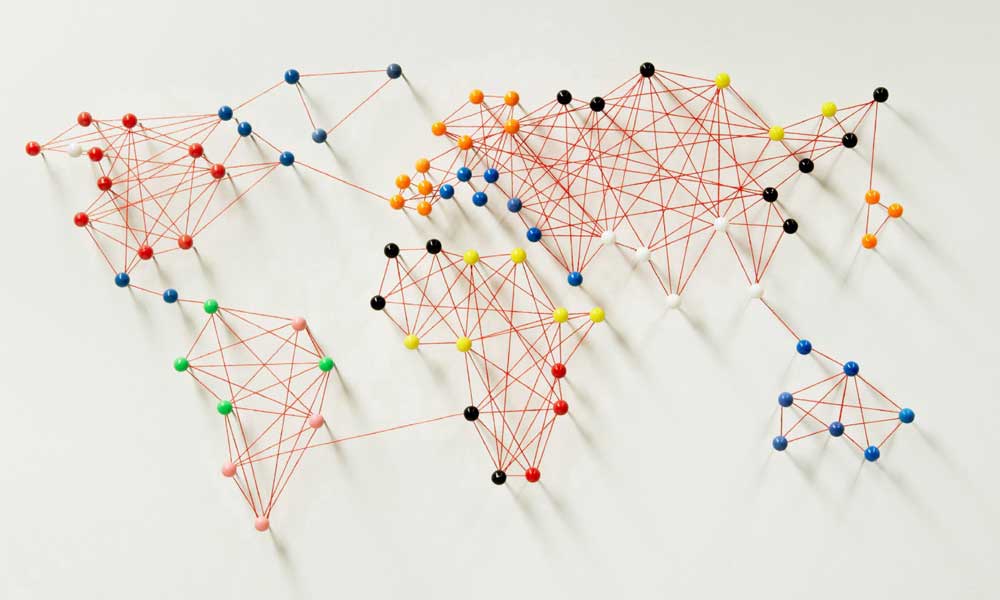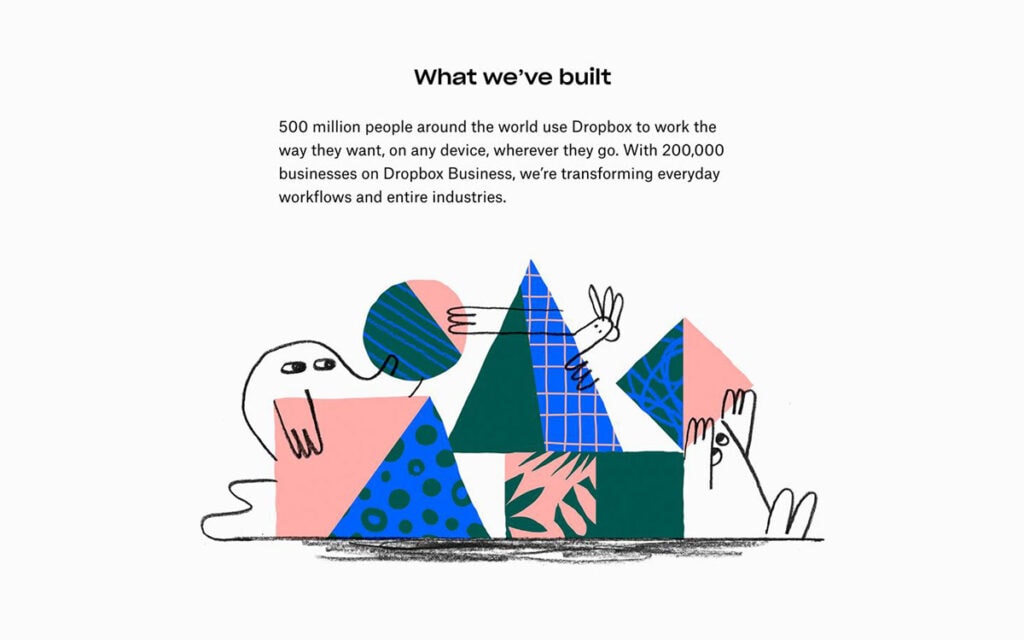10+ Things a Designer Can Do That a Design Tool Can't
In the design world, technology is rapidly advancing with new tools that aim to replicate or replace aspects of the traditional design process. From graphic design platforms to architectural modelling software, these tools undoubtedly offer efficiency through automation. However, the distinctive value of human designers endures. This article explores critical abilities exclusive to designers that even the most advanced design tool lacks.
Table of Contents
Leverage Broad and Deep Knowledge
The foundation of great design lies in broad and deep knowledge accrued over years of study and practice. Design tools feature an embedded understanding of visual aesthetics, user patterns, architectural principles, and more. However, their knowledge base remains limited to what developers have programmed.
Human designers accumulate interdisciplinary knowledge across art, psychology, culture, nature, history, and technology. They continuously update mental models through lifelong learning. This fluid, wide-ranging mental database fuels creative leaps that rigidly defined design tools cannot achieve.
Key Advantages
- Draw broadly from a mental knowledge repository instead of confined embedded inputs.
- Make leap-of-insight connections across disparate domains.
- Maintain an up-to-date understanding of trends and innovations.
Discern Subtle Cultural Nuances

Design is ultimately for people. So, understanding user cultural contexts is vital for empathic, people-centred design. Compared to designers, design tools lack living culture and struggles. They cannot pick up on subtle cultural cues and context that profoundly shape user perceptions, emotions, and behaviours.
A human designer soaking in culture daily can discern societal undercurrents that tools oblivious to living culture miss. They catch nuanced shifts in societal attitudes, tensions, aesthetics, and trends directly impacting design decisions. Deep cultural understanding remains exclusively a human faculty despite AI advances.
Key Advantages
- Detect subtle cultural undercurrents, tensions, and transitions.
- Grasp societal aesthetics and trends from within the culture.
- Bring empathic cultural insight to the design process.
Harness the Creative Process
The creative process that generates great design is irrational, fluid, and serendipitous. In contrast, design tools rely on structured inputs and rules. So, while tools can efficiently churn out design variations meeting defined criteria, they cannot drive the fuzzy front-end creative process.
Unlike codified design tools, human designers harness abilities fundamental to creativity, like curiosity to explore problems, make lateral connections across ideas, take mental leaps, and synthesise unexpected solutions. Intuition and gut feeling also guide dynamic creative thinking that is impossible to capture algorithmically.
Key Advantages
- Leverage fluid, irrational facets of creativity like curiosity and intuition.
- Synthesise unexpected connections through mental leaps.
- Drive fuzzy front-end exploration and ideation.
Internalise the Design Craft
The design craft entails expertise acquired through countless hours of hands-on practice. This embodied know-how enables skilled judgment calls during creative decisions. Designers internalise practical craft wisdom — intuitive grasps of visual harmony, ergonomics, spatial relations, and user friction points.
Design tools codify specific rules and best practices of the design craft. But they cannot soak up and internalise the often ineffable craft knowledge from actively creating. The subtleties and feel of the design process can only be accumulated first-hand.
Key Advantages
- Acquire design expertise through embodiment and active practice.
- Make rapid judgment calls drawing on embodied craft knowledge.
- Internalise practical subtleties and ergonomics of the design
Provide Creative Artistry

There remains an artistry, personal signature, and heart to brilliant design flowing purely from human creators. Designers put their unique spin and perspective into their work. Leading designers are renowned for signature styles cultivated over lifetimes. The most celebrated designs bear unreplicated creative thumbprints.
Algorithms generating design lack any individual personality or backstory shaping output. While AI tools can mimic certain styles, they cannot yet capture the soulfulness and humanity unique designers breathe into their creations over long careers. Creative artistry remains a profoundly human gift.
Key Advantages
- Infuse personal signature style, perspective, and heart.
- Shape designs over a lifetime through a cultivated creative lens.
- Bring humanity and soulfulness to output.
Offer Custom Consulting and Guidance
Expert designers provide immense value through direct consulting unmatched by any standalone tool. They build personal creative partnerships with clients to shape projects tailored to unique needs. Custom guidance during complex initiatives can make or break outcomes in design-driven fields like architecture.
Unlike generalised design platforms, human designers, with their versatility, can guide clients through detailed requirements, adjusting workflows and recommendations in real time. A seasoned design lead's personalised, shepherding attention remains out of reach for automated tools relying on confined scopes and static rule sets.
Key Advantages
- Build close collaborative relationships.
- Offer flexible, tailored attention across project lifecycles.
- Adjust guidance dynamically based on shifting needs.
Integrate Stakeholder Inputs Smoothly
Navigating complex multi-stakeholder environments is an underappreciated design ability that tools cannot emulate. Human designers gracefully facilitate alignment and consensus across diverse parties through empathy, diplomacy, and compromise. They integrate contradictory inputs while keeping projects on track.
Design by committee is notoriously risky. Mediating strong opinions, expectations, and constraints to drive unified design progress requires social-emotional savvy, which is absent in sophisticated collaborative platforms. Ultimately, synthesising human priorities into cohesive designs remains exclusively a human superpower.
Key Advantages
- Understand diverse perspectives with empathy.
- Broker compromises and shapes consensus gracefully
- Synthesise contradictory inputs into cohesive designs.
Translate Abstract Requirements Effectively

A core design task is translating vague ideas or abstract requirements into concrete designed outcomes that meet stakeholder expectations. Human designers clarify ambiguous asks, interpret fuzzy feedback, and repeatedly reframe abstract notions until landing on mutually understood solutions.
Unlike human designers, adept at deriving clarity through organic conversation, design tools rely on users inputting largely well-defined parameters to drive output. They expect structured problem specification and falter when ambiguous subjective priorities dominate projects. Unable to probe ambiguities through interactive discussion like designers, outputs risk misalignment.
Key Advantages
- Fluidly interpret ambiguous questions through interactive probes.
- Reframe abstract notions through sustained clarifying dialogues.
- Ensure designed outcomes align with the desired intent.
Bring Responsible Oversight
Design is a potent force requiring ethical application for positive impact. Unlike neutral tools, human designers as moral agents can provide ethical oversight — considering consequences, recalibrating for biases, ensuring responsible innovation, and shaping technology for social good.
While AI design tools promise to democratise design, they pose risks like perpetuating embedded biases. Only human designers centralising ethical accountability can steward equitable, conscientious innovation as technologies grow more disruptive. Essential human virtues remain integral to design progress.
Key Advantages
- Evaluate and mitigate biases.
- Shape ethical technology usage and policies.
- Prioritise social good in design actions.
Enable Emotional Connection

Great design forges a profound emotional connection with users that lingers across interactions. Master designers have a preternatural grasp of human emotion. They create moments of beauty, meaning, and feeling for people through design by surfacing vulnerability, delighting the senses, and inspiring.
Even sentiment analysis algorithms lack emotional and social intelligence underlying designers' empathic resonance with users. Coded design tools miss opportunities to build rapport, surprise, and inspire wonder — critical ingredients for uplifting experiences. For now, the emotional alchemy of human creativity remains impossible to digitise.
Key Advantages
- Tap innate social-emotional sensitivities.
- Identify opportunities for emotional connection.
- Craft delightful, impactful experiences.
Adapt to Unforeseen Complexity
Design problems frequently involve navigating emergent complexity unanticipated at the project's outset, containing no programmed solutions. Unlike bounded applications, human designers flexibly pivot using inventiveness, resourcefulness, and quick learning as complexity mounts.
General design tools fall short when unpredictable situations arise without vastly enlarged problem spaces. However, seasoned designers rapidly contextualise and frame unfamiliar issues through past experiences to drive solutions. They specify new constraints, best practices, and quality benchmarks on the fly — dynamic thinking eluding coded tools.
Key Advantages
- Rapidly frame unfamiliar issues by comparison to the past.
- Improvise quality standards for emergent situations
- Inventively navigate unprogrammed complexity.
Conclusion
Advanced design tools undoubtedly offer game-changing efficiency and broadening participatory access. However, exclusively human strengths like creativity, artistry, emotional resonance, ethical responsibility, and dynamic problem-solving remain competitively unmatched as complementary partners to technological automation. Rather than rivals, human designers and design technologies shine most brilliantly together to empower innovation for people.
5 FAQs
What are examples of great designers demonstrating unique human skills?
Many celebrated designers, like Ray and Charles Eames, demonstrate the power of creative artistry to meet human needs, renowned for iconic emotional craftsmanship blending beauty and utility. Frank Gehry's billowing deconstructed buildings prove the imaginative leaps possible through a lifetime of mastering architectural arts and culture.
Can design tools not currently capable evolve these abilities someday?
Possibly in the long term. But many human skills like emotional connection involve innate aspects developmentally honed that remains mystifying to codify digitally without fundamentally recreating human consciousness. Nearer-term advancement lies in complementary human-AI collaboration rather than pure replacement.
Do typical designers employ the full range of these differentiating abilities?
No. Truly exceptional virtuoso designers harness this broad spectrum of exclusively human talents in harmony. Most practitioners demonstrate subsets selectively. However, the potential diversity of integrated strengths across knowledge, creativity, artistry, and ethical application is exclusive to human designers.
If tools gain creative abilities like designers, do designers lose value?
Designers adept in the latest tools while retaining distinctly human strengths sustain immense competitive value. The versatility to fluidly complement rising technological capabilities by leading stakeholder collaboration, providing creative oversight, and focusing on ethics remains a prime designer edge into the foreseeable future.
Can inferior human designers endure against superior design tools?
In narrow applications, bounded tools outmatching mediocre designers emerge. But generative complex design involving emergent requirements, cultural nuance, emotional relevance, and responsible innovation favours well-rounded human leadership supported by specialised automation, expanding rather than shrinking opportunities for uniquely equipped human designers.
Key Statistics
- 63% of designers say emotional intelligence is significantly or very important to design capabilities, dwarfing technical skills at 37%. (Adobe)
- 76% of architects report computational design tools creating new complex assignments rather than replacing existing work. (Morpholio)
- 97% of executives believe human strengths like imagination, curiosity, and emotional intelligence will endure against AI technologies over the next decade. (PwC)
TLDR; Designer Advantages Over Tools
- Apply broad interdisciplinary knowledge.
- Harness irrational creative process.
- Discern cultural nuances and trends.
- Shape designs with creative artistry
- Offer custom consultative guidance.
- Broker stakeholder alignment
- Translate ambiguous specifications
- Provide ethical oversight
- Forge emotional connections
- Improvise amidst uncertainty
